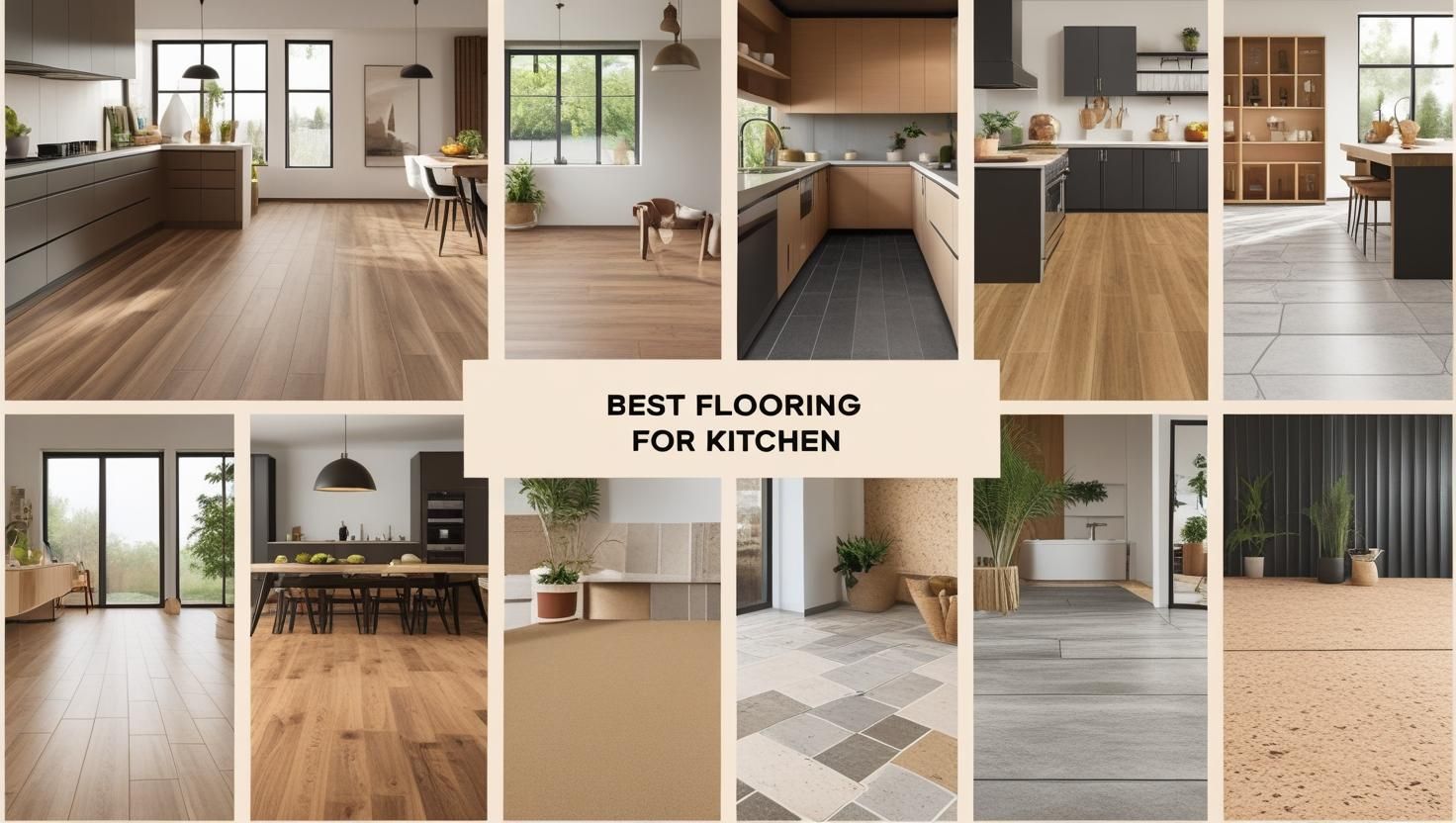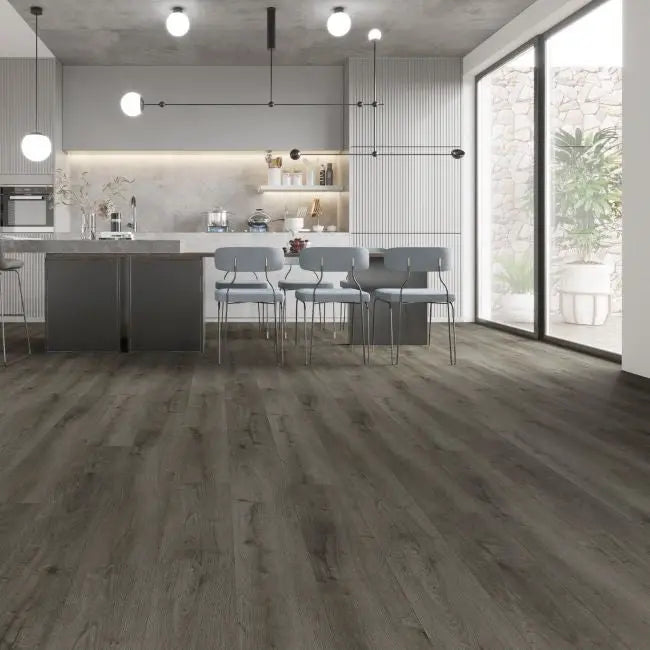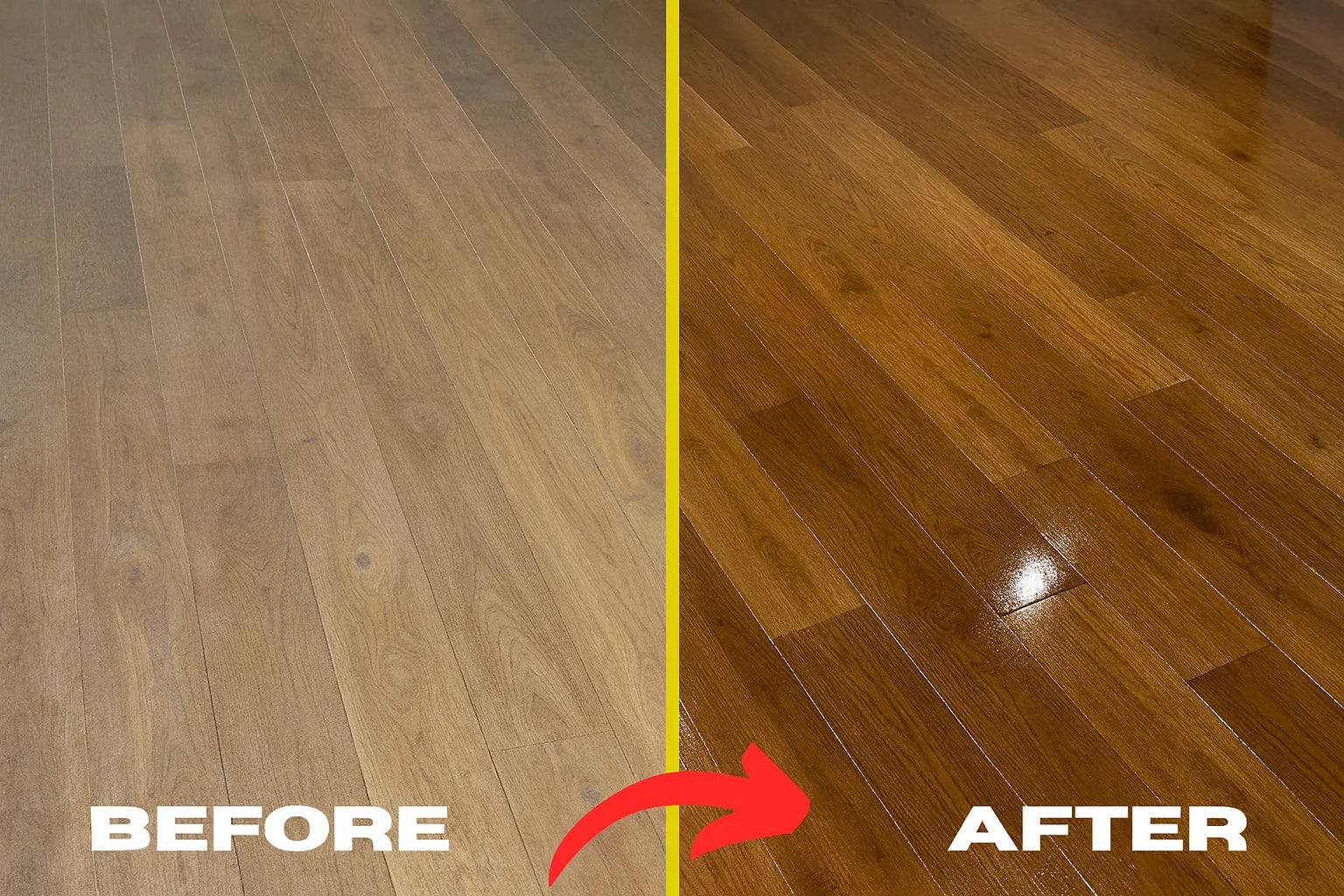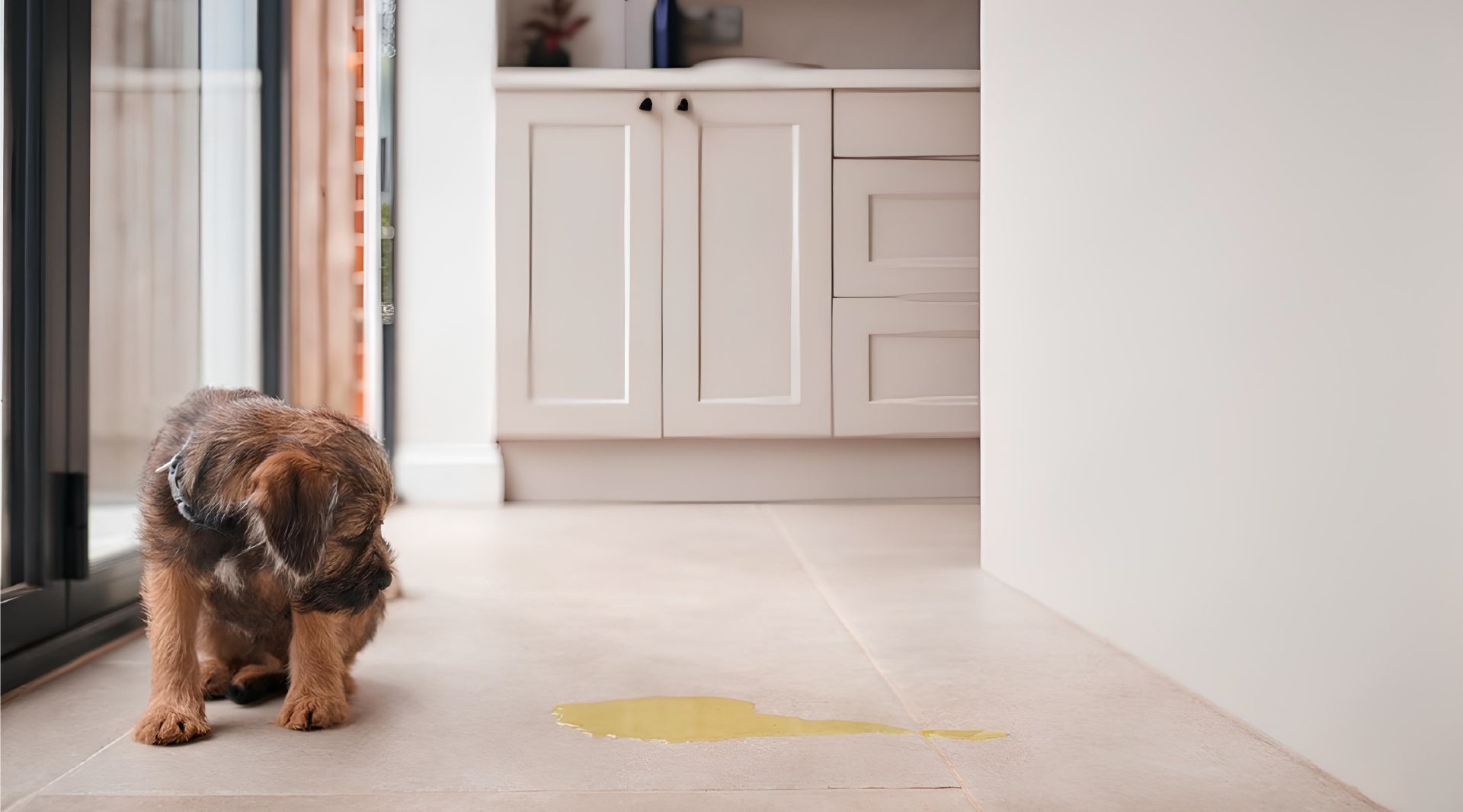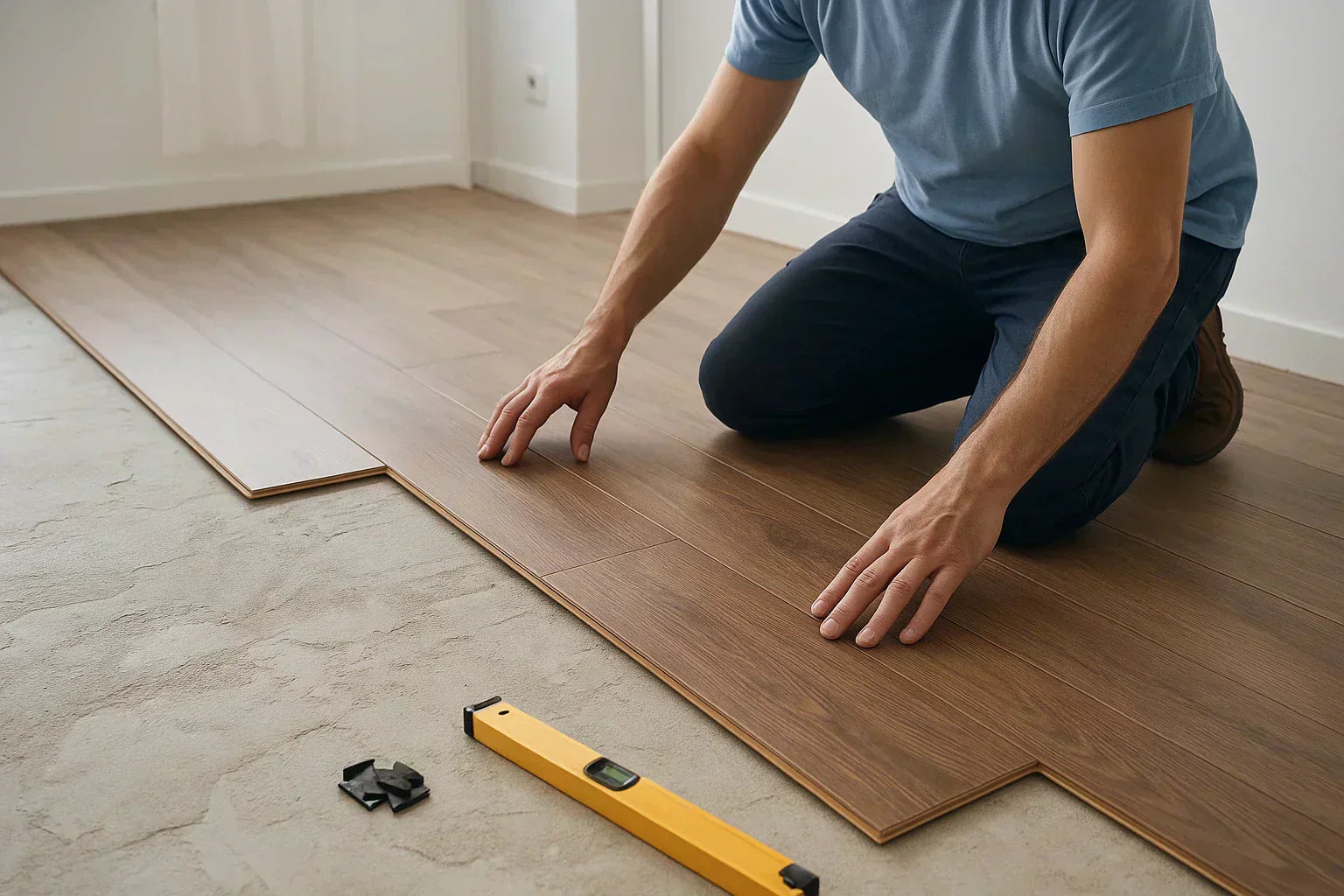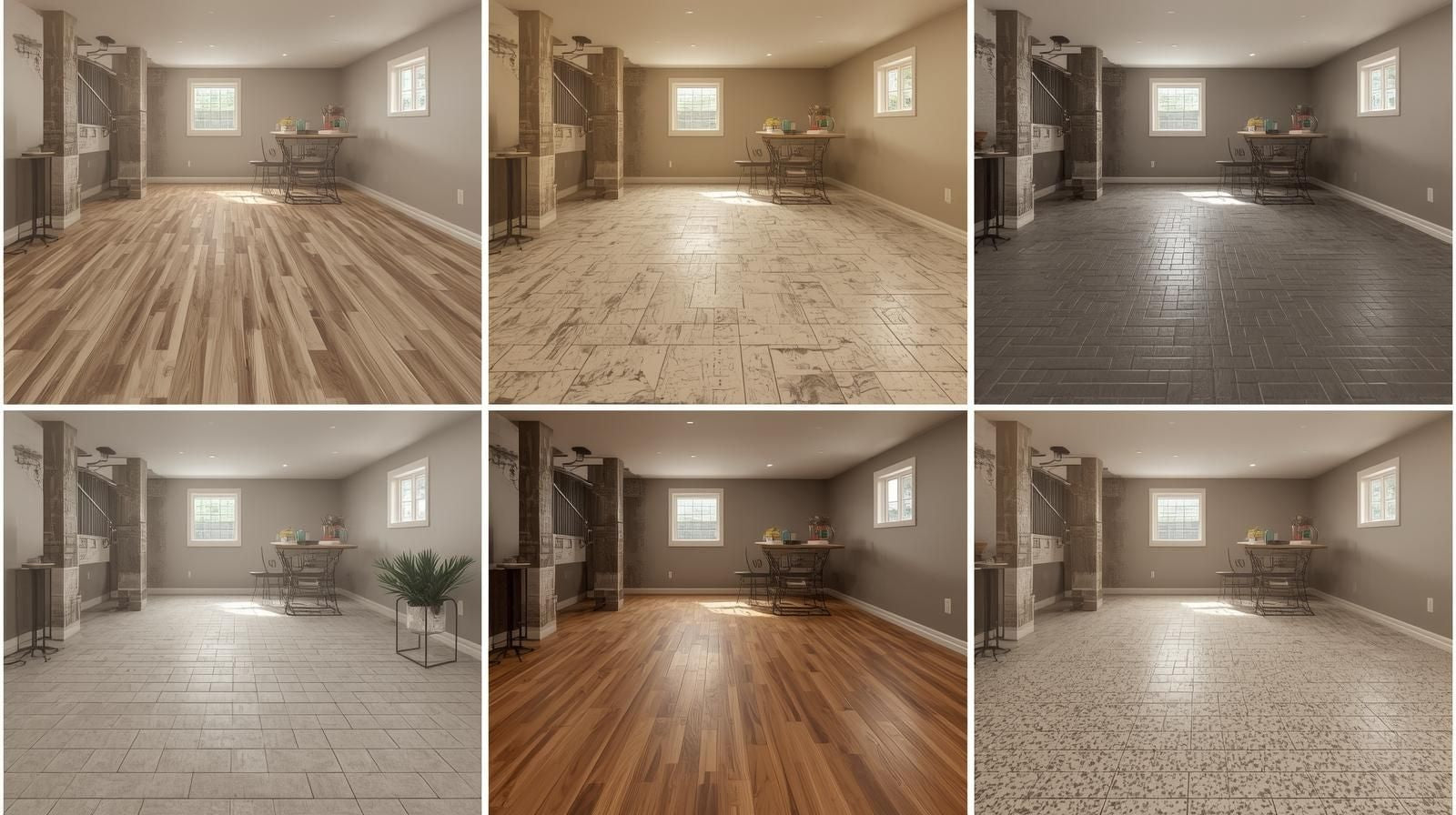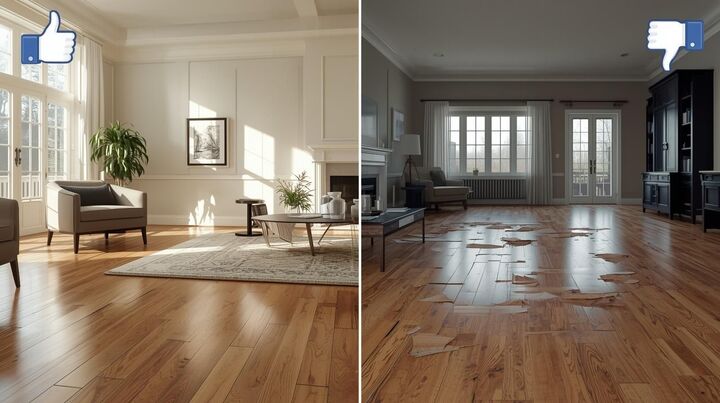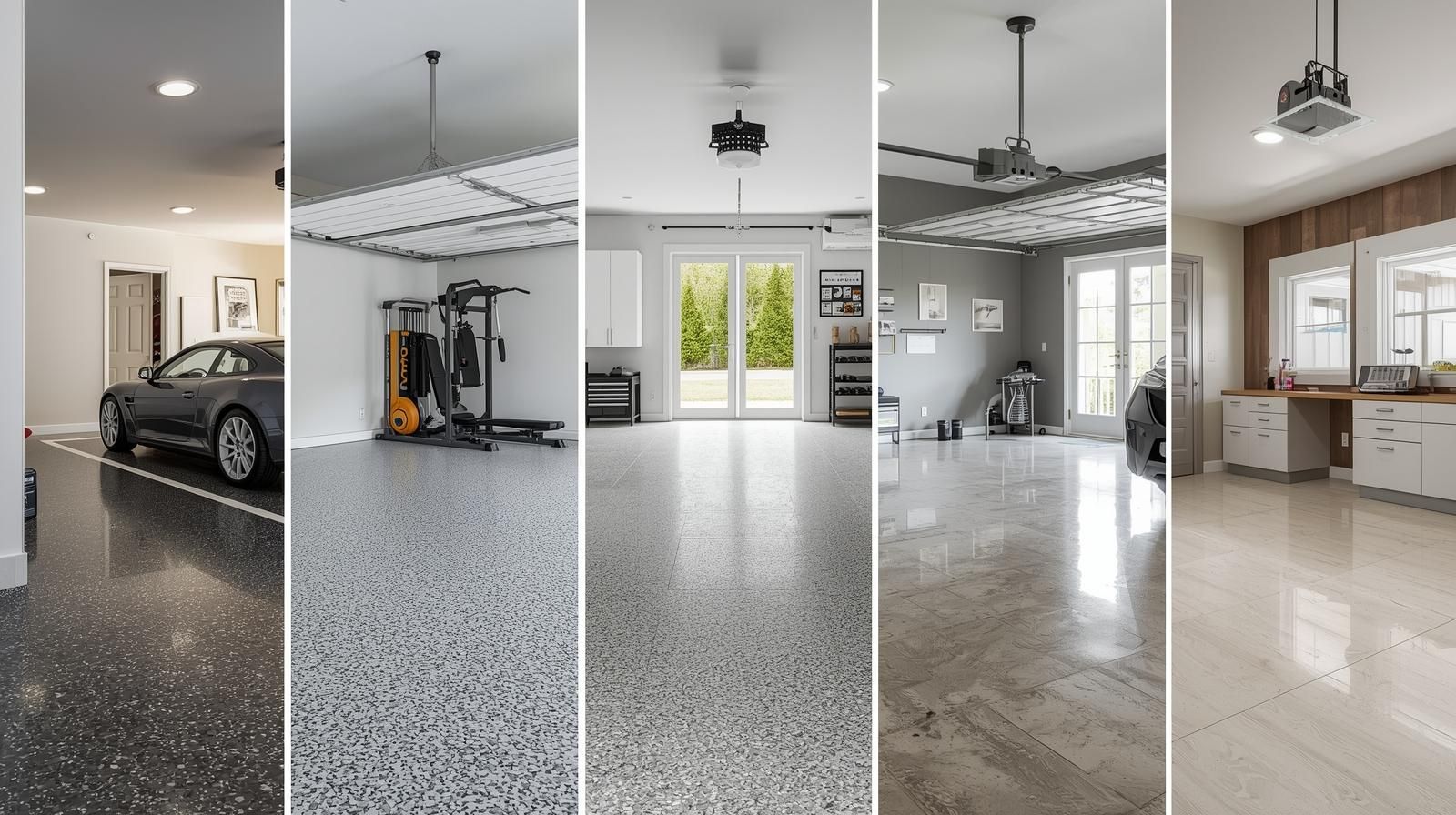Is your kitchen floor tough enough to handle daily wear and tear?
The kitchen is a place where life happens to the fullest; coffee brews on sleepy mornings, kids drop cereal bowls, and guests inevitably gather during every get-together. So you actually select a surface for this space that has to survive spills, scrapes, heat, moisture, and daily foot traffic, without losing its charm.
However, there is no single “best” kitchen floor that fits every home. Vinyl might be a lifesaver for busy families, and natural stone adds that luxury finish to a chef’s kitchen. Some materials offer waterproof performance but lack warmth, while others feel amazing underfoot but can be vulnerable to wear.
So, we are exploring how each material performs in a real-life kitchen setting, considering durability, water resistance, ease of maintenance, comfort, aesthetics, cost, and even installation. Let's just find out!
1. Waterproof Luxury Vinyl

Perfect For:
- Moisture-prone kitchens
- Busy households
- Budget-friendly modern kitchens
- DIY-friendly remodels
In kitchens, luxury vinyl flooring is a favorite choice now for many people. Its water resistance and toughness make it stand up well to daily wear and tear. Multiple layers form this flooring: a core that blocks water, a photo-realistic layer that looks like wood or stone, and a sturdy surface layer that shields against damage.
Handling moisture and spills is no problem for this floor, even with lots of foot traffic. Families and pet owners appreciate how well it handles scratches, stains, and dents.
This flooring is the best option for the kitchen because it is:
- 100% waterproof core resists moisture, spills, and humidity
- Multi-layer construction for durability, scratch resistance, and realism
- High-definition visuals replicate hardwood, stone, or tile textures
- Click-lock or glue-down installation for versatility and ease
- Compatible with radiant floor heating for added comfort
- Low maintenance: easy to clean, stain-resistant, and fade-resistant
- Durable wear layer protects against dents, scratches, and daily wear
The installation uses a click-lock system, which makes fitting quicker and less disruptive. Many people, from experts to DIYers, prefer it for its compelling features and multiple types. Also, LVP works well with radiant heating systems, providing a warm and comfy surface that stays easy to clean and care for.
Explore Some Trendy Designs:
2. Engineered Hardwood

Perfect For:
- Classic and transitional kitchens
- Homeowners seeking natural wood aesthetics
- Kitchens with fluctuating humidity levels
The rich and warm look of traditional hardwood comes alive in engineered hardwood flooring for the kitchen. It brings extra strength and stands up better to moisture, which is why it works well in kitchens. Layers of plywood form the base, topped with a real hardwood veneer.
This layered design stops warping and cupping, problems that often happen with solid hardwood in damp kitchen spaces. The many layers keep the wood stable while showing the natural grain and feel of real wood.
What Makes Engineered Hardwood Flooring Stand Out in Kitchens?
- Multi-layer plywood core provides superior dimensional stability
- Real hardwood veneer offers authentic wood grain and texture
- Better moisture and humidity resistance compared to solid hardwood
- Can be sanded and refinished multiple times to extend lifespan
- Compatible with radiant heating systems for added comfort
- Durable finish protects against scratches, stains, and wear
- Installation options include floating, glue-down, or nail-down methods
Refinishing is possible on engineered hardwood, so it can last longer and change style if you want. It works well with underfloor heating and handles changes in temperature better. This makes it both a smart and stylish choice for kitchen floors, mixing natural charm with strong performance.
Read more about Top Brands and Trending Styles of Engineered Hardwood Floors
Explore Popular Designs:
3. Waterproof Laminate Flooring

Perfect For:
- Cost-conscious homeowners
- High-traffic kitchens
- DIY renovations
- Kitchens need scratch-resistant surfaces
Kitchens often benefit from waterproof laminate flooring because it balances cost, toughness, and style. Its base consists of high-density fiberboard, while a detailed photographic layer shows realistic wood, stone, or tile designs. This gives kitchens a natural look without the high price of genuine materials. The surface layer defends against stains and scratches, making it highly suitable for busy families with pets and children.
Highlights of Laminate Flooring for Kitchen:
- High-density fiberboard core ensures durability and stability
- Realistic photographic layer replicates wood, stone, or tile aesthetics
- Protective wear layer resists scratches, stains, and fading
- Click-lock installation suitable for DIY and professional fitting
- Moderate moisture resistance; waterproof flooring for the kitchen is available
- Compatible with underfloor heating systems when installed with a proper underlay
- Budget-friendly alternative to hardwood or stone flooring
Laminate is resistant to fading and relatively easy to install via click-lock systems, though it is less water-resistant than vinyl or tile, requiring careful spill management and possibly waterproof variants.
Some Design Options:
4. Ceramic & Porcelain Tile Flooring

Perfect For:
- Busy family kitchens
- High-moisture areas
- Modern and traditional design
- Budget-conscious remodels require durability
Tile flooring remains a popular choice for kitchen floors due to its toughness and water resistance. Porcelain floor tile for the kitchen comes in numerous designs, letting homeowners match their style easily. Porcelain tiles are made from denser clay and baked at a higher temperature than ceramic ones. This process makes porcelain harder and less absorbent. It suits kitchens with heavy foot traffic and frequent spills, providing long-lasting performance.
Moisture, scratches, and heat find tough opposition in both types, which is vital for busy kitchens. Ceramic tile flooring for the kitchen has a wide range of finishes, patterns, and sizes, allowing creative freedom, from timeless subway tiles to sleek, modern large-format slabs. Grout lines also benefit from sealing, adding stain resistance, and making cleaning easier. Surfaces with slip-resistant textures help keep the kitchen safe.
Homeowners Prefer Ceramic & Porcelain Tiles for Kitchen Floors because they are:
- Highly durable with superior scratch and impact resistance
- Low porosity (especially porcelain) ensures excellent water and stain resistance
- Wide variety of colors, patterns, sizes, and finishes for design flexibility
- Suitable for underfloor heating systems, enhancing kitchen comfort
- Easy to clean and maintain; resistant to mold and bacterial growth
- Requires sealed grout to prevent moisture penetration and staining
- Slip-resistant surface options improve kitchen safety
Explore Some Popular Options:
5. Natural Stone Flooring (Marble, Slate & Travertine)

Perfect For:
- Luxury kitchens
- Traditional and classic designs
- High-end renovations
- Homeowners seeking durable flooring
Kitchen floors look rich and refined with natural stone floors like marble, slate, or travertine. Each type has its own color patterns and textures, pulled straight from the earth. No two pieces are alike. These natural stones have strong heat resistance, so placing a hot pan down isn’t a problem. Their strength makes them durable for a long time.
The natural veining in marble or the rustic charm of slate can add a lot of personality to the space. Some types of stone floors soak in water or spills if they aren’t periodically sealed. This can lead to stains or damage, especially from anything acidic. The grip or slip resistance depends on the type of stone and its finishing.
A honed or rough surface makes walking safer, especially in wet areas. It may cost more to install, but stone flooring boosts home value. Many homeowners found it to be a safe and lasting upgrade.
What Makes Natural Stone Flooring Popular for Kitchens?
- Natural variation ensures unique and premium aesthetics
- High durability with excellent heat and impact resistance
- A porous surface requires professional sealing and maintenance
- Available in polished, honed, or textured finishes for slip resistance
- Suitable for radiant floor heating, but may require specific underlayments
- High density reduces wear, but care is needed to prevent scratching or etching
- Increases resale value due to premium appeal and longevity
6. Concrete-Effect Flooring

Perfect For:
- Industrial kitchens
- Modern lofts
- Minimalist interiors
- High-traffic culinary spaces
Industrial-style kitchens often use concrete-effect flooring to create a bold look. Real polished concrete or tiles that copy the style both bring in a sharp and clean layout that fits today’s open kitchens.
Concrete flooring is designed to be durable, stain-resistant, and low-maintenance, which helps prevent stains. Underfloor heating works well with it, especially in colder homes. Its thick surface and smooth finish help block out water, heat, and marks. So, for kitchens that are in regular use, it stays strong and looks good too.
Key Features of Kitchen Concrete Flooring:
- Low maintenance, simple sweeping, and occasional damp mopping
- Long lifespan, lasting 30–50+ years with proper care
- Seamless surface minimizes grout lines and cleaning effort
- Water- and heat-resistant (especially when sealed properly)
- Compatible with radiant underfloor heating systems
- Often made with polished concrete, porcelain tile, or LVT (Luxury Vinyl Tile) options that resemble concrete
- Neutral gray tones offer versatile design potential
Explore Popular Options:
7. Cork Flooring

Perfect For:
- Environmentally conscious homeowners
- Kitchens seeking natural insulation
- Spaces requiring soft
- Cushioned flooring with hypoallergenic properties
Cork flooring is a smart, eco-friendly option made from the bark of cork oak trees. The process doesn’t harm the trees, which keeps it a renewable pick for kitchens today. Its soft and springy surface brings comfort underfoot and helps lessen tiredness when standing for long periods.
The material has built-in antimicrobial features to hold up well against mold, mildew, and even small pests. These qualities help keep the kitchen cleaner. Cork also quiets the space thanks to its natural ability to absorb sound. In busy households, that matters.
While it does need sealing to protect from spills and stains, proper care keeps it looking and working well. You get comfort, strength, and a natural look that fits a warm kitchen vibe.
What Makes Cork Flooring Ideal for Kitchens?
- Renewable, biodegradable material harvested sustainably from cork oak bark
- Natural thermal and acoustic insulation reduces energy costs and noise
- Soft, cushioned surface minimizes fatigue and improves comfort underfoot
- Naturally antimicrobial and resistant to mold, mildew, and pests
- Requires sealant application for water and stain resistance in kitchens
- Moderate durability; vulnerable to sharp objects but repairable with refinishing
- Compatible with radiant heating systems when properly installed
Popular Design Options:
8. Go Green with Bamboo Kitchen Flooring

Perfect For:
- Eco-conscious homeowners
- Modern kitchens seek a sustainable yet stylish look
- Kitchens require durable and moisture-resistant flooring
Bamboo flooring for the kitchen works well as a green choice. It's made using bamboo grass, which grows much faster than trees. That makes it better for the environment compared to regular hardwood. Strand-woven bamboo is especially strong. It can handle daily foot traffic and resists scratches more than most other kitchen floors. This makes it a smart pick for homes where the kitchen stays busy all day.
The natural resistance of bamboo to moisture helps it hold up well, though sealing it properly still matters, especially in busy kitchens. You’ll notice its smooth grain and warm color, both bring a fresh, natural look that fits many home interiors. Cleaning bamboo flooring doesn’t take much effort. It also works great with underfloor heating, so the kitchen stays warm and looks good at the same time.
Features of Bamboo Kitchen Flooring
- Rapidly renewable resource harvested from bamboo grass, minimizing environmental impact
- Strand-woven varieties offer exceptional hardness and scratch resistance
- Naturally moisture-resistant but requires sealing to protect against spills and humidity
- Smooth, elegant grain with warm, natural color variations
- Can be refinished to extend lifespan and maintain appearance
- Suitable for installation over radiant heating systems with correct underlayment
- Easy to clean, low maintenance, and hypoallergenic
How Much Does it Cost to Replace a Kitchen Floor in 2025?
In 2025, putting in a new kitchen floor could cost differently based on the type of flooring, the kitchen’s size, and how tricky the work is. Many spend around $1,500 to $5,000 when replacing the floor in a medium-sized kitchen.
Affordable floors like vinyl planks and laminate fall in the $2 to $5 per square foot range for installation. High-end floors push the price up. Think of hardwood, luxury porcelain tile, or even natural stone; these may cost $7 to $20 per square foot.
Replacing a kitchen floor in 2025 varies widely depending on the material, kitchen size, and installation complexity. On average, homeowners can expect to pay between $1,500 and $5,000 for a mid-sized kitchen floor replacement.
Budget-friendly options like laminate or vinyl plank flooring typically cost $2 to $5 per square foot, including installation. More premium materials, such as natural stone, hardwood, or high-end porcelain tile, range from $7 to $20 per square foot.
Additional Factors That Affects Kitchen Flooring Cost
- Flooring Material Type
- Kitchen Size
- Installation Complexity
- Labor Rates
- Subfloor Preparation
- Old Flooring Removal
- Pattern or Custom Layout
- Warranty and Brand Quality
Complex patterns or custom layouts can increase expenses. Eco-friendly and sustainable flooring options like bamboo or cork might carry a slight premium but add value with durability and style.
The best value floor means balancing your budget alongside the durability, ease of maintenance, and aesthetic appeal of the flooring. It helps to talk to a flooring expert who can give you precise cost estimates based on your kitchen’s exact needs.
Which Flooring Options Are Not Recommended for Kitchens?
The wrong flooring for your kitchen can lead to frequent repairs, poor durability, and safety hazards. Certain materials, despite their aesthetic appeal, are generally not recommended due to their susceptibility to moisture, staining, or wear in high-traffic, spill-prone environments like kitchens.
- Carpet – Absorbs spills, odors, and grease; nearly impossible to clean thoroughly in a kitchen setting.
- Unsealed Natural Stone – Highly porous; can absorb liquids and develop stains, mold, or bacterial growth without proper sealing.
- Softwoods (like Pine or Fir) – Too soft for high-traffic kitchen use; easily scratched, dented, and worn over time.
- Standard Laminate (non-waterproof) – Vulnerable to moisture damage; planks may swell, delaminate, or lift if exposed to standing water.
- Cork without Proper Sealant – Though eco-friendly, unsealed cork can absorb water and deteriorate in humid kitchen environments.
- Low-Quality Peel-and-Stick Vinyl – Poor adhesion and thin wear layers lead to peeling, bubbling, and reduced durability in high-moisture areas.
The Bottom Line
The floor you choose for your kitchen does more than fill the space under your feet — it absorbs the noise, the spills, the foot traffic, and the chaos of everyday life. It has to feel right, work hard, and last long. And sometimes, making that choice is less about what is trending and more about what actually fits how you live.
Not sure where to begin, or need help narrowing down the options? We are here to help you figure it out. Call us at 833-20378-4559 and speak directly with a flooring expert.


